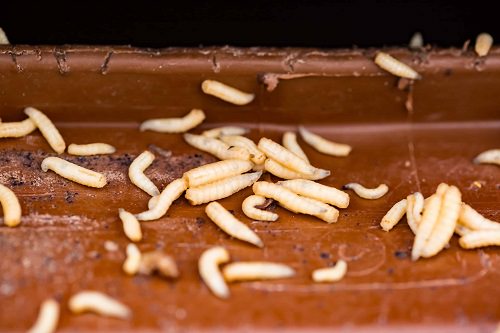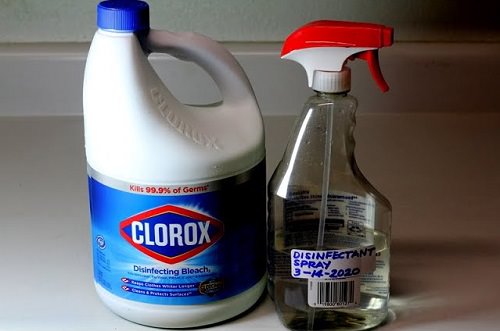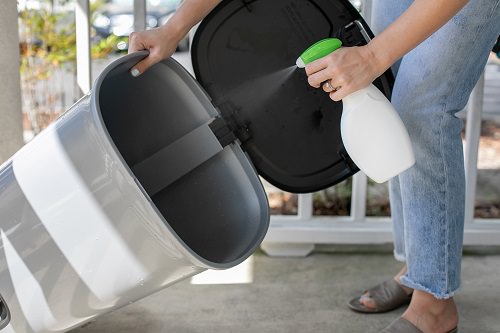Does bleach kill maggots? This intriguing question might come handy when you want to get rid of these tiny uninvited maggots with household bleach!
What Are Maggots?
Maggots are a generic term for the larva stage of flies. In simple words, when flies lay eggs, they turn into maggots, which then become flies, and the evolution goes on. Maggots are often seen around old or rotten organic material, especially in the trash cans. They feed non-stop for 4 -5 days and eat meat leftovers, pet food, dead animals, and tissue debris of plants and animals.
Where Do Maggots Come From?
To know where do maggots come from, you have to understand the life cycle of a fly. The life cycle begins when an adult fly lays eggs on decaying meat or leftover meals. Within 24 hours, maggots/larvae hatch out from the eggs. They start consuming the organic material continuously for 4-5 days to store energy for their next pupa form. This larva stage completes their development in 4-13 days in the optimal temperature by going through 3 instars and the molting process. After that, the fully grown maggot migrates from the food source to a cool place, to transform into the next pupa stage. In this form, the maggot undergoes drastic transformation and completes the growth in 2-6 days in warm temperature, or it takes 17 to 27 days at low temperature. In the end, the adult fly emerges from the pupa case and flies away for mating.
What Do Maggots Thrive On?
Maggots get most attracted to rotten meat, dead animals, and decaying organic matter (fruits and vegetables). They are often found thriving around these decaying food sources, especially in a trash can. However, sometimes, maggots thrive inside humans and animal bodies, as well. This happens when an adult fly lays eggs on their lesion or onto the mammals’ urine/feces soaked fur.
Are Maggots Dangerous?
Maggots are harmful to both humans and animals, as their infestation can cause myiasis. This condition arises when either humans or animals consume larvae infested food or a fly deliberately deposit eggs on their open wounds or cuts. In this ailment, the maggots feed on the live tissues of their host, resulting in blisters and other painful symptoms.
Does Bleach Kill Maggots?
You’ll breathe a sigh of relief by knowing the fact that bleach can kill maggots. Maggots are unpleasant, that’s why if any part of your house has their infestation, then try out the following bleach method quickly.
Supplies
- Equal Parts of Clorox Bleach
- Equal Parts of Hot Water
- A Plastic or Metal Bowl
- Hand Gloves
- Face Mask
- Small Spatula
Directions
- Combine equal parts of Clorox bleach and hot water into a bowl using a small spatula.
- Now, empty the prepared mixture onto the maggots.
- If you do this method into a trash can or wheelie bin, then close the lid immediately, and leave it for half an hour or so, allowing the fume to do its work.
- Once it’s done, open the bin, remove the dead maggots, and wash it thoroughly with another bleach solution.
Notes:
- Wear good quality hand gloves and face mask during the treatment to avoid any mishaps.
- Guide your kids, pets, and senior citizens to stay far away from the treated area.
How to Prevent Maggots & Flies?
After eliminating maggots, it’s vital to follow the below preventive measures to stop their infestation in the first place.
- Preserve the food in airtight sealed containers.
- Always clean up the spilled food.
- Tie your garbage bags tightly and seal the trash can properly.
- Empty the dustbins regularly.
- Clean trash can regularly or once in a week with bleach.
- Make sure to cover your pets’ food bowl when not in use.
- Keep your yard free of pet’s poop.
- Avoid throwing meat and fish in your trash can.
Conclusion
During hot summer months, maggots infestation is quite common. But, no worries, using the above bleach method, you can eliminate those unwelcomed pests quickly. Besides, if you are always annoyed by the tiny house flies, then check out this article. If you have any suggestions or queries, then feel free to comment down below; we would love to hear from you.

